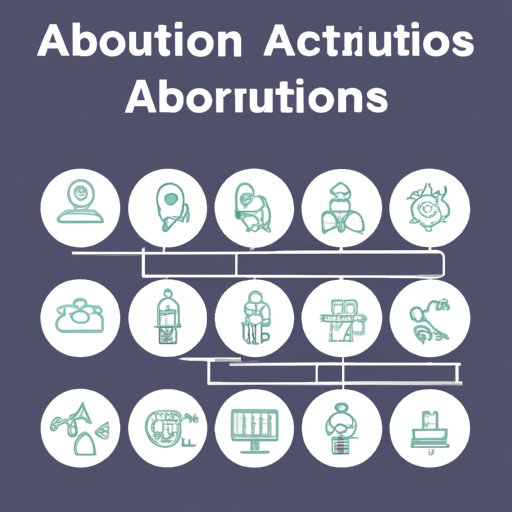Introduction
As technology continues to advance, automation and artificial intelligence (AI) are becoming increasingly embedded in our lives. Automation refers to the use of machines and computers to perform tasks that would traditionally be done by humans. AI, on the other hand, is a form of automation that uses computer algorithms to simulate human cognition and behavior. With the development of these technologies, many people are beginning to worry about the potential impact they may have on employment and job security.
In this article, we will explore the current trends in automation and AI, and examine the potential risks and opportunities that these technologies bring for workers. We will look at how businesses are leveraging AI to cut costs, and investigate the changing nature of work with AI. Finally, we will discuss the future of human employment in a digital age.
Examining Current Trends in AI and Employment
Automation has been a part of the industrial landscape for decades, but its scope and impact on employment has grown significantly in recent years. According to research from McKinsey Global Institute, the number of jobs lost to automation could reach between 400 and 800 million by 2030, with the greatest impact felt in lower-skill occupations.
The rise of AI has also had a profound impact on the labor market. Many companies are now using machine learning and other AI-based technologies to automate complex tasks, such as customer service and data analysis. This trend is expected to continue, with some estimates suggesting that up to 75 million jobs could be lost to automation by 2022.

Understanding the Changing Nature of Work with AI
As automation and AI become more prevalent in the workplace, it is important to understand how these technologies could disrupt different industries. For example, AI-driven automation has already had a significant impact on manufacturing, logistics, and transportation. In addition, AI is being used to automate administrative tasks in the healthcare industry, such as scheduling appointments and processing medical records.
While automation has the potential to reduce labor costs and increase efficiency, it also presents certain risks for workers. As machines become increasingly capable of performing complex tasks, there is a risk that some jobs will become obsolete, leading to a decrease in demand for human workers.

Examining the Risks of Automation for Workers
The increasing prevalence of automation and AI has raised concerns about the potential displacement of human workers. In particular, lower-skilled workers are most vulnerable to job loss due to automation, as their skills are not easily transferable to new roles.
Furthermore, businesses are increasingly leveraging AI to cut costs. For example, AI-driven chatbots are being used to provide customer service and support, potentially reducing the need for human employees. Similarly, automated software is being used to analyze data and make decisions, eliminating the need for manual labor.

Investigating the Future of Human Employment in a Digital Age
As automation and AI continue to evolve, it is important to consider their potential impacts on job security. While some jobs may become obsolete due to automation, there is also the potential for new jobs to be created in the process. For example, the rise of AI could create new career paths in fields such as data science and AI engineering.
It is also important to recognize that automation and AI can also bring benefits to workers. Automation can free up time for workers to focus on higher-value tasks, and AI-driven tools can help to improve accuracy and performance. Furthermore, AI has the potential to reduce mundane tasks, allowing workers to focus on more creative and interesting work.
Conclusion
The rise of automation and AI is having a profound impact on the labor market, with some estimates suggesting that millions of jobs could be lost to these technologies in the coming years. While there are certainly risks associated with automation, there are also potential benefits for workers, such as improved accuracy and performance, and the possibility of new career paths. Ultimately, it is important to recognize that automation and AI will continue to shape the future of work, and it is up to us to prepare for the changes ahead.
(Note: Is this article not meeting your expectations? Do you have knowledge or insights to share? Unlock new opportunities and expand your reach by joining our authors team. Click Registration to join us and share your expertise with our readers.)
